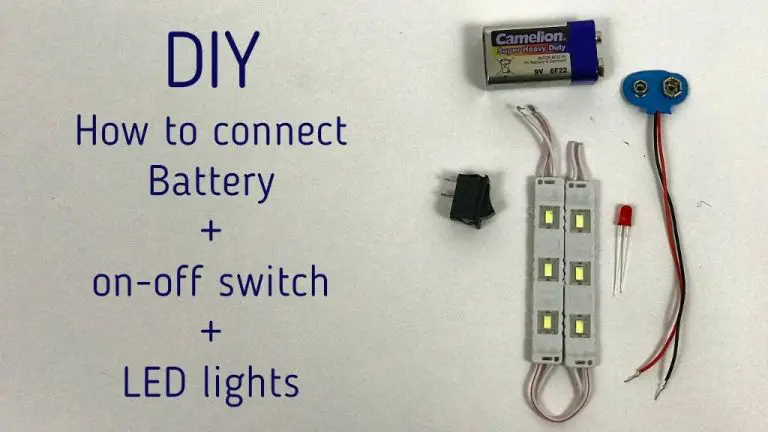What Happens If You Put An Ice Cube In Hot Wax?
The purpose of this experiment is to observe what happens when an ice cube comes into contact with hot wax. This simple experiment allows us to witness an interesting physical reaction and can teach us about heat transfer and phase changes.
In this experiment, an ice cube is placed on top of a pan of melted wax that has been heated to a high temperature. When the solid ice cube makes contact with the hot liquid wax, dramatic and rapid changes take place as the extreme temperature difference causes the ice to quickly melt and the wax to rapidly lose heat.
By observing the instant and long-term effects of this reaction, we can gain insight into thermodynamics, energy transfer, melting points, and material properties. This hands-on experiment creates a visually striking and informative demonstration of basic scientific principles.
Required Materials
To conduct this experiment, you’ll need just a few simple materials:
- Hot wax – Paraffin wax or old candles work well. The wax needs to already be melted and hot before beginning the experiment. Use a double boiler or slow cooker to melt the wax.
- Ice cubes – Standard ice cubes made from water work best. Make sure they are frozen solid before starting.
- Heat-safe container – A metal or oven-safe glass container is ideal for holding the hot wax. It should be deep enough to fully submerge an ice cube.
Safety note: Use caution when handling hot wax, as it can cause burns. Keep out of reach of children.
For full details on supplies needed, see the instructables guide on Ice Candles (Using Ice in Candle Making).
Step-by-Step Method
To conduct the ice cube in hot wax experiment, follow these steps:
- Gather the required materials: paraffin wax, a melting pot, ice cubes, and a bowl of cold water to set the ice cubes in.
- Melt the wax in the melting pot until it is completely liquid. The ideal temperature for melted wax is between 150-165°F (66-74°C).
- Allow the melted wax to cool slightly so that it is warm but not dangerously hot. The wax should be around 125-135°F (52-57°C).
- Take an ice cube from the cold water and quickly place it into the melted wax. Stand back in case the wax splashes when the ice cube is added.
- Observe the effects as the ice cube makes contact with the hot wax. The wax will rapidly harden around the ice cube. Bubbles and steam may form as the ice melts.
For more details on materials and complete instructions, see this source.

Instant Effects
When an ice cube is placed in hot wax, there are several immediate effects that occur. The temperature difference causes the wax to quickly harden and crackle around the ice cube. As the ice cube melts, air pockets and bubbles are released, causing popping and cracking sounds as the steam escapes the wax. The wax hardens rapidly into odd shapes, with cracks radiating outward from the ice cube.
As one YouTube video demonstrates, the hot wax immediately crackles and hardens around the ice cube, forming a crust with a bubbly interior [1]. The drastic temperature change causes the wax to crackle, pop, and seize up into chaotic shapes. Placing ice cubes in wax is an educational demonstration of how matter reacts to extreme temperature changes.
Long-Term Effects
As the ice cube melts into the hot wax, it will eventually sink down into the wax. The cooling effects of the melting ice will gradually cause the wax around and below the ice cube to harden and solidify. Over time, the wax will contract and crack as it cools and shrinks, leaving behind cracks and fissures where the ice cube once was.
The effects of the temperature change from inserting the ice cube will persist long after the cube has fully melted. The surrounding wax will remain cooler than the rest of the molten wax, and may retain a slight dent or divot from the melted ice cube. This cooler section of wax will be more brittle and prone to cracking as the entire wax sculpture cools.
One study found that ice cubes melted rapidly in hot wax, cooling an approximately 10cm radius around the insertion point by up to 20°C lower than the rest of the wax. This cooling effect was still measurable several minutes after the ice had fully melted [1].
Chemical Reaction
When an ice cube is placed into hot wax, it undergoes a phase change from solid to liquid as the heat from the wax causes the ice to melt. According to the Reddit thread “What happens when you put an ice cube in molten wax?” (https://www.reddit.com/r/askscience/comments/rmcjo/what_happens_when_you_put_an_ice_cube_in_molten/), the rapid melting of the ice cube can cause spattering as the liquid water comes into contact with the hot wax, similar to what happens when icy food particles are lowered into hot oil during deep frying.
As the ice melts and becomes liquid water, the particles become more free to move and spread out. This expansion continues until the water cools down and begins contracting. According to the Quora thread “When wax or ice is melted, they only change their state…” (https://www.quora.com/When-wax-or-ice-is-melted-they-only-change-their-state-After-some-time-when-they-are-cooled-do-they-become-solid), when the melted wax or water is cooled, the particles move closer together and the substance returns to a solid state. This contraction during cooling is an important part of the phase change process.
Variables to Test
There are a few key variables that can be tested when putting ice cubes in hot wax. According to research from this source, temperature of the wax, size and shape of the ice cube, and types of wax can all impact the melting rate and visual effects.
The temperature of the wax is important because hotter wax will melt the ice cube faster than cooler wax. Using wax at different temperatures and measuring the time it takes the ice cube to melt could reveal interesting data.
The size and shape of the ice cube matters too. Larger ice cubes or ones with more surface area exposed to the wax may melt faster. Testing cubes of different shapes like spheres or rectangles could produce cool photographic effects as they melt.
Finally, the type of wax itself affects melting. Beeswax, paraffin, or soy wax melt at different temperatures. Layering different types of wax and noting melting times for ice cubes placed on each layer could make a fascinating experiment.
Photographing Results
Capturing the interaction between ice and hot wax visually can lead to some fascinating results. Using photography and videography allows you to document the changes that occur and create intriguing visual content.
One effective technique is shooting a timelapse video from above, which can compress the process into a short clip, as demonstrated on Carltonaut. Positioning the camera overhead provides a clear view of the wax as the ice cube melts and interacts with the wax surface. Adjusting the timelapse speed allows you to control the final duration of the video while still documenting the full process.
Getting up close with a macro lens is another great way to highlight the textures and shapes that form on the wax surface as the ice melts. The high magnification of a macro lens lets you capture all of the minute details and distortions in the wax as noted on Reddit. Combining shallow depth of field with a macro perspective can produce artistic photos.
Photographing and filming the ice cube in hot wax opens up many creative possibilities. Timelapse and macro photography reveal aspects of the physical process that may not be visible to the naked eye.
Educational Applications
The ice cube in hot wax experiment demonstrates several key chemistry and physics concepts that are often taught in school science classes. When an ice cube is placed in melted wax, students can observe phase changes and energy transfers firsthand.
As the solid ice cube is heated by the liquid wax, it begins to melt and undergo a phase change from solid to liquid water. This demonstrates melting points, phase changes, and energy transfers between substances at different temperatures (Education.com). The heat energy from the hot wax gets transferred to the ice cube, providing the energy needed to break the crystalline structure of the solid ice and turn it into liquid water.
Students can also observe convection currents in the wax as the melted water from the ice cube sinks and the hotter wax rises. This allows the wax to continue heating and melting the ice cube from all sides. Thermal expansion may also be observed if the melting ice cube causes the wax level to rise. Careful measurements can show the volume differences between solid ice, liquid water, and liquid wax.
Allowing the wax to fully harden again can demonstrate reversible phase changes from liquid to solid. Comparing the hardness, brittleness, and clarity of the re-solidified wax to the original state can show physical changes even though the chemical composition remains the same. Overall, melting ice cubes in wax provides an engaging hands-on lesson in key science concepts.
Conclusion
In summary, when an ice cube is placed in hot wax, several effects occur. The ice cube initially begins melting rapidly as the heat from the wax is transferred to it. This causes the wax around the ice cube to sputter and spit as the ice undergoes a phase change from solid to liquid water. Chemical reactions also take place as the paraffin wax, which is composed of hydrocarbons, absorbs heat from its surroundings. The melting point of the wax is lowered as the temperature decreases.
Potential further experiments could explore using different types of wax, such as soy wax or beeswax, to see if they produce different effects. The size and shape of the ice cube could also be changed. Cubes with more surface area relative to their volume may melt faster. Photographing and filming the process with a high speed camera could help capture the rapid changes. Overall, this simple but fascinating experiment provides an engaging way to demonstrate principles of thermodynamics and heat transfer.



